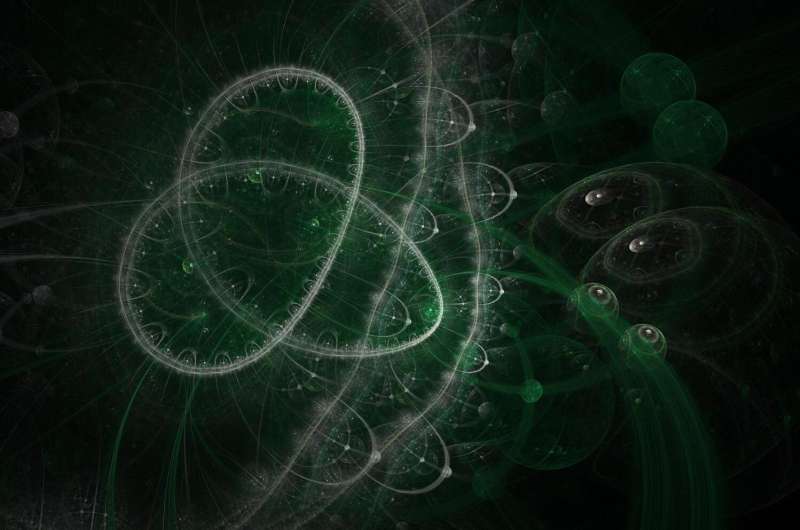May 5, 2017 report
Researchers achieve direct counterfactual quantum communication

(Phys.org)—In the non-intuitive quantum domain, the phenomenon of counterfactuality is defined as the transfer of a quantum state from one site to another without any quantum or classical particle transmitted between them. Counterfactuality requires a quantum channel between sites, which means that there exists a tiny probability that a quantum particle will cross the channel—in that event, the run of the system is discarded and a new one begins. It works because of the wave-particle duality that is fundamental to particle physics: Particles can be described by wave function alone.
Well understood as a workable scheme by physicists, theoretical aspects of counterfactual communication have appeared in journals, but until recently, there have been no practical demonstrations of the phenomenon. Now, a collaborative of Chinese scientists has designed and experimentally tested a counterfactual communication system that successfully transferred a monochrome bitmap from one location to another using a nested version of the quantum Zeno effect. They have reported their results in the Proceedings of the National Academy of Sciences.
The quantum Zeno effect occurs when an unstable quantum system is subjected to a series of weak measurements. Unstable particles can never decay while they are being measured, and the system is effectively frozen with a very high probability. This is one of the implications of the well known but highly non-intuitive principle that looking at something changes it in the quantum realm.
Using this effect, the authors of the new study achieved direct communication between sites without carrier particle transmission. In the setup they designed, two single-photon detectors were placed in the output ports of the last of an array of beam splitters. According to the quantum Zeno effect, it's possible to predict which single-photon detector will "click" when photons are allowed to pass. The system's nested interferometers served to measure the state of the system, thereby preventing it from changing.
Alice transfers a single photon to the nested interferometer; it is detected by three single photon detectors, D0, D1 and Df. If D0 or D1 click, Alice concludes a logic result of one or zero. If Df clicks, the result is considered inconclusive, and is discarded in post-processing. After the communication of all bits, the researchers were able to reassemble the image—a monochrome bitmap of a Chinese knot. Black pixels were defined as logic 0, while white pixels were defined as logic 1.
The idea came from holography technology. The authors write, "In the 1940s, a new imaging technique—holography—was developed to record not only light intensity but also the phase of light. One may then pose the question: Can the phase of light itself be used for imaging? The answer is yes." In the experiment, the phase of light itself became the carrier of information, and the intensity of the light was irrelevant to the experiment.
The authors note that besides applications in quantum communication, the technique could be used for such activities as imaging ancient artifacts that would be damaged by directly shining light.
More information: Direct counterfactual communication via quantum Zeno effect. PNAS 2017 ; published ahead of print April 25, 2017, DOI: 10.1073/pnas.1614560114
Abstract
Intuition from our everyday lives gives rise to the belief that information exchanged between remote parties is carried by physical particles. Surprisingly, in a recent theoretical study [Salih H, Li ZH, Al-Amri M, Zubairy MS (2013) Phys Rev Lett 110:170502], quantum mechanics was found to allow for communication, even without the actual transmission of physical particles. From the viewpoint of communication, this mystery stems from a (nonintuitive) fundamental concept in quantum mechanics—wave-particle duality. All particles can be described fully by wave functions. To determine whether light appears in a channel, one refers to the amplitude of its wave function. However, in counterfactual communication, information is carried by the phase part of the wave function. Using a single-photon source, we experimentally demonstrate the counterfactual communication and successfully transfer a monochrome bitmap from one location to another by using a nested version of the quantum Zeno effect.
Journal information: Proceedings of the National Academy of Sciences
© 2017 Phys.org





















